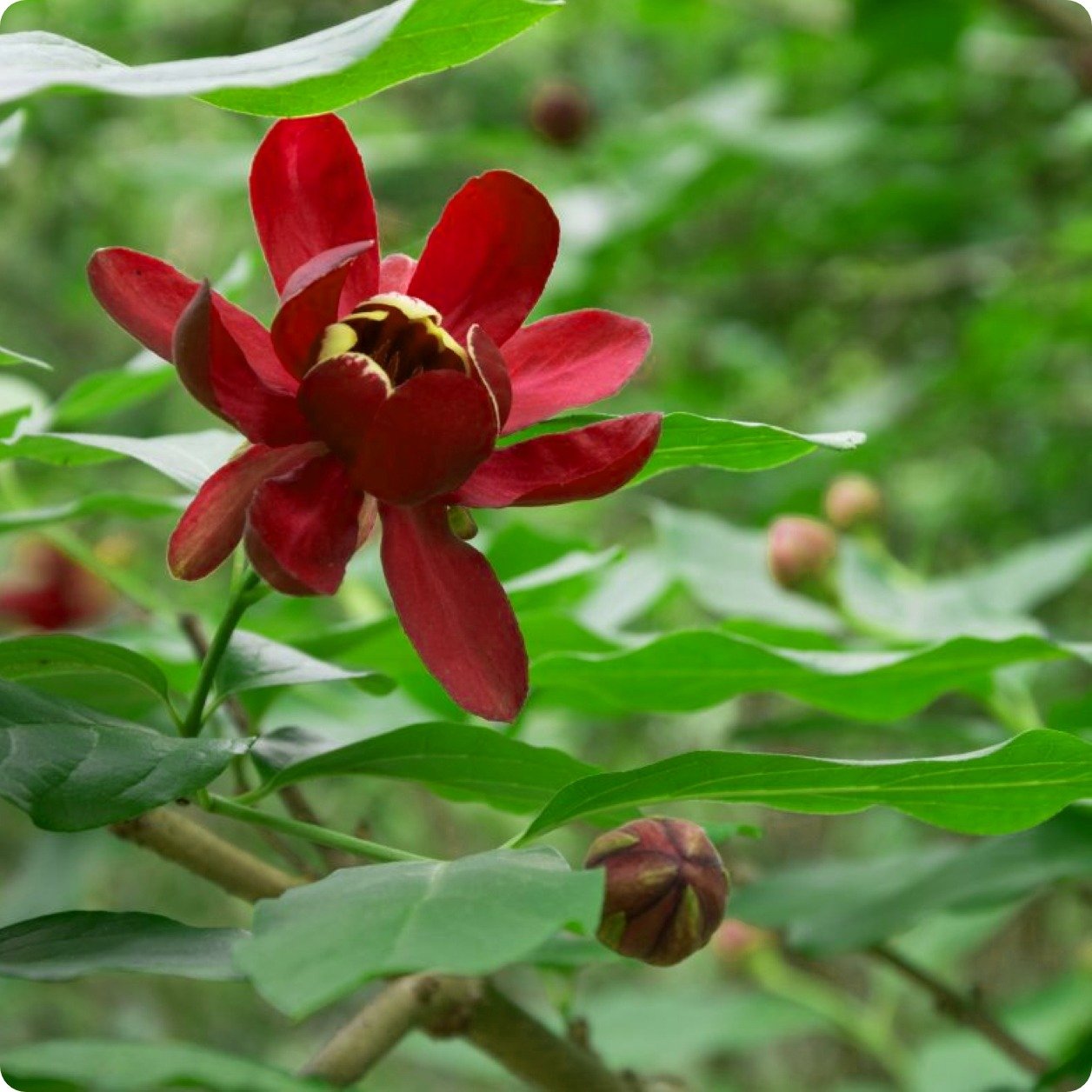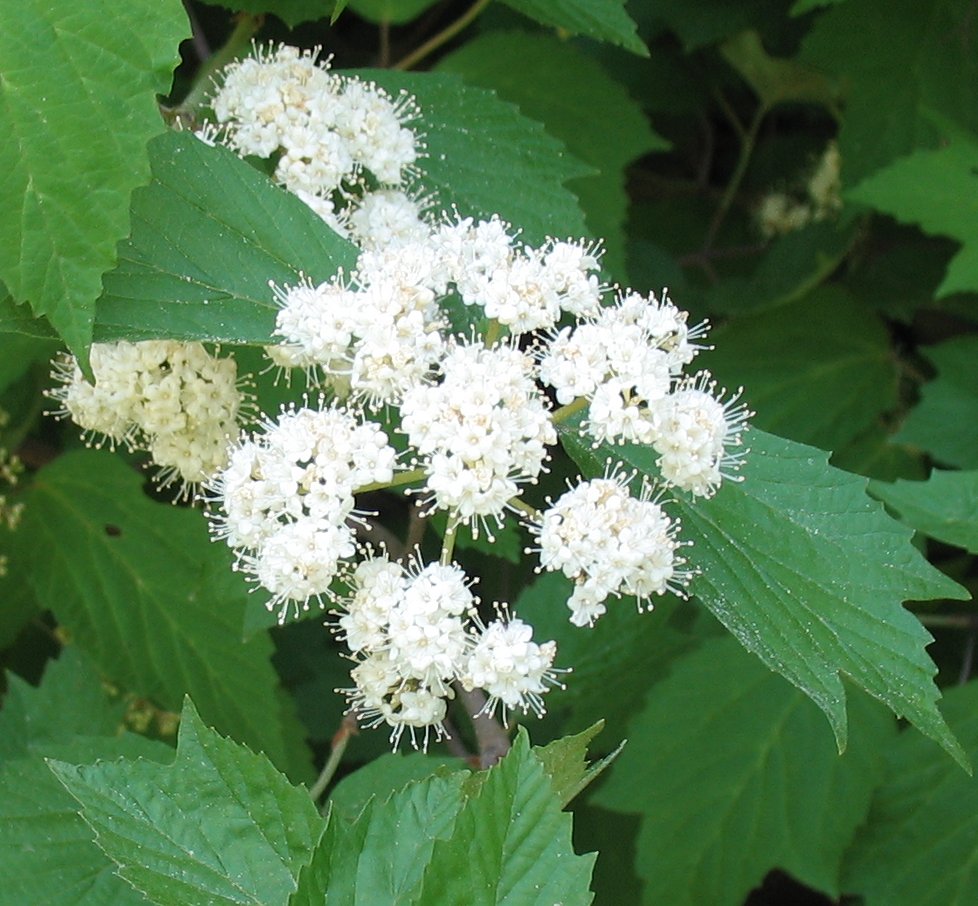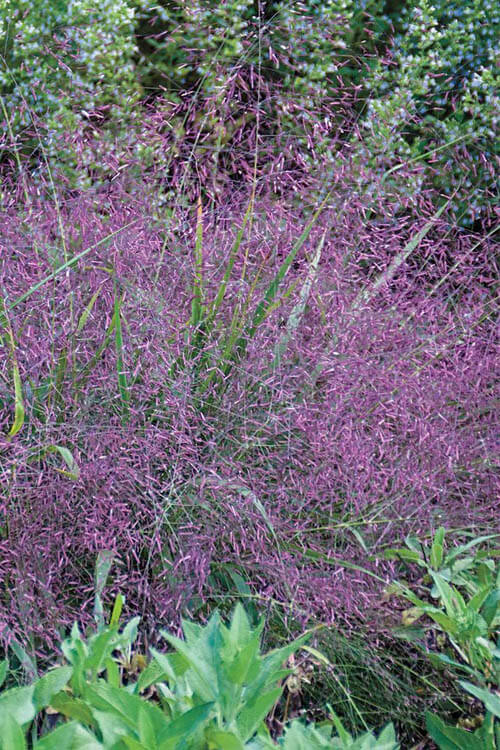Types, Varites and Favroite Trees to Attract Birds
Birds bring life, color, and a harmonious ambiance to our gardens, making them an essential part of any outdoor space. One of the most effective ways to attract and support avian wildlife in your garden during winter is by planting bird-friendly shrubs and trees for them to nest and roost in. These shrubs provide birds with shelter and food and serve as nesting sites, ensuring the survival of future generations.
This article will explore four bird-friendly shrub types: Burning Bush, Forsythia, Carolina Allspice, and Maple Leaf Viburnum, and how their dense branch structures and tight branches make them ideal bird nesting spots. With this kind of structure, the eggs that the birds lay in their nests will be protected. After the eggs hatch, the baby birds will be safe from predators.

Burning Bush (Euonymus alatus)
The Burning Bush, scientifically known as Euonymus alatus, is a versatile and visually striking shrub that offers numerous benefits to birds during winter. This deciduous shrub is well-loved for its brilliant red foliage in the fall, but it has much more to offer than just aesthetics. Burning Bush attracts a variety of bird species through its small, inconspicuous flowers that bloom in spring. These flowers provide nectar for hummingbirds and insects, attracting other birds that feed on them, such as warblers and sparrows. The shrub also produces small red fruits, a valuable food source for birds like robins, cedar waxwings, and bluebirds.
One key feature that makes the Burning Bush bird-friendly is its dense and twiggy growth habit. Birds find this shrub particularly appealing for nesting because it provides excellent cover and protection. The dense branch structure and tight branching offer a secure environment for birds to build their nests. Species like sparrows, finches, and warblers are often seen nesting in the tangled branches of the Burning Bush. The thick foliage acts as a natural shield, keeping the nests hidden from potential predators. Birds nesting in Burning Bushes benefit from the shrub's thorny stems. These thorns deter larger predators, such as raccoons and cats, that might attempt to climb the shrub to access the nests. The sheltered location within the dense branches also shields nests and eggs from the elements, providing a relatively stable microclimate that helps protect against extreme weather conditions.
Forsythia (Forsythia spp.)
Forsythia, a genus of flowering shrubs, is a welcome sight in early spring when its bright yellow blossoms signal the end of winter. These shrubs are not only attractive to gardeners but also to a variety of bird species. Thanks to their profuse and vibrant yellow blooms, forsythias are a magnet for early spring pollinators such as bees and butterflies. As these insects visit the flowers to collect nectar and pollen, they inadvertently attract insect-eating birds like warblers, vireos, and flycatchers.

Additionally, Forsythias produce tiny seeds relished by birds like goldfinches and sparrows. Forsythias have an open and arching growth habit with many tiny branches. Birds find these shrubs appealing for nesting because of the structure's flexibility and accessibility. The branches offer a network of pathways and hidden nooks for birds to build their nests. Species such as cardinals, robins, and finches often choose Forsythia shrubs as their nesting sites. The shrub's deciduous nature also allows ample sunlight during the growing season, creating a warm and hospitable environment for birds.
While Forsythia shrubs lack the thorns found on some bird-friendly shrubs, their dense branching structure protects nests and eggs. The intertwining branches help conceal the nests from aerial predators, and the open framework allows birds to have a clear line of sight to monitor their surroundings. This combination of factors helps ensure the safety of the nesting birds and their offspring.
Carolina Allspice (Calycanthus floridus)
Carolina Allspice, scientifically known as Calycanthus floridus, is a native shrub with aromatic foliage and unique, maroon to reddish-brown flowers. Beyond its enticing fragrance and visual appeal, this shrub provides essential resources for birds year-round. Carolina Allspice's flowers produce nectar, attracting pollinators, including hummingbirds, butterflies, and bees. When these pollinators visit the shrub, they become an easy food source for insect-eating birds like warblers, orioles, and phoebes. Species such as sparrows and finches consume the shrub's seeds.

The Carolina Allspice's dense, multi-stemmed growth habit makes it an excellent choice for nesting birds. Birds find the shrub's tight branches and thick foliage ideal for building their nests. The shrub's woody structure provides sturdy support for nests, and its aromatic leaves offer added protection by deterring herbivores. Birds like chickadees, cardinals, and wrens commonly choose Carolina Allspice shrubs as their nesting sites. Carolina Allspice's dense foliage creates a hidden and secure environment for nests and eggs. The aromatic leaves may also help mask the scent of the nesting birds, reducing the chances of predators detecting their presence. The shrub's placement near the ground makes it less accessible to larger predators, further enhancing the safety of the nesting birds.
Maple Leaf Viburnum (Viburnum acerifolium)
Maple Leaf Viburnum, scientifically known as Viburnum acerifolium, is a native shrub in eastern North America. Its unique characteristics and adaptability to various garden conditions make it a valuable addition to bird-friendly landscapes. Maple Leaf Viburnum produces clusters of white flowers in late spring that attract pollinators, including bees and butterflies. These pollinators, in turn, draw insect-eating birds like warblers and vireos.
The shrub also produces small, red, berry-like fruits in late summer and early fall, providing a critical food source for birds such as thrushes, sparrows, and grosbeaks. The Maple Leaf Viburnum's name is derived from its striking, maple-like leaves, which create an attractive backdrop for nesting birds. The shrub's branches form a loose, twiggy structure that birds find conducive for nest building. The shrub's size, typically around 3 to 6 feet in height, makes it an ideal choice for smaller birds like sparrows, warblers, and vireos to nest within its branches.

While the Maple Leaf Viburnum may not have thorns or dense foliage, its shrubby nature protects nests and eggs. The branches create a complex and maze-like environment, which can deter potential predators. Additionally, the shrub's location near the ground makes it less accessible to larger ground-dwelling predators. Combining these factors enhances the safety of nesting birds and their offspring.
Creating a bird-friendly winter garden is a rewarding endeavor that benefits our feathered friends and adds beauty and vibrancy to our outdoor spaces. By selecting shrubs like the Burning Bush, Forsythia, Carolina Allspice, and Maple Leaf Viburnum, you can attract a diverse array of bird species to your garden.
These shrubs' dense branch structures and tight branches provide secure nesting sites that protect nests and eggs from predators and harsh weather conditions. Their attractive flowers and fruits offer a valuable bird food source, ensuring your garden remains a haven for avian wildlife year-round. So, whether you're a seasoned gardener or a novice looking to enhance your outdoor space, consider incorporating these bird-friendly shrubs into your winter garden. Not only will you create a more inviting environment for birds, but you'll also have the pleasure of watching these beautiful creatures thrive in your backyard.


















































